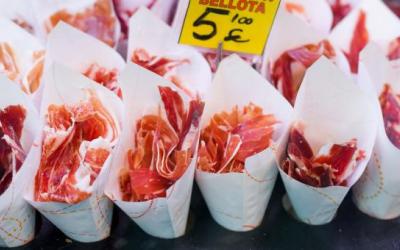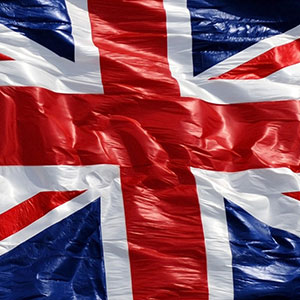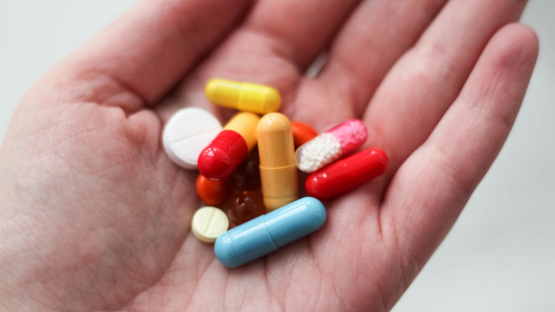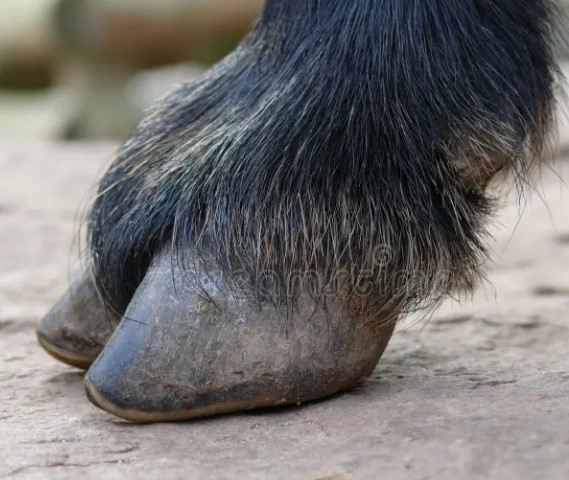MERCOSUR: what is it, what countries are included and why is it needed

Content:
- What is MERCOSUR
- History of the creation and expansion of MERCOSUR
- Which countries are part of the union?
- Objectives of MERCOSUR
- Mercosur structure
- Economy and trade within the bloc
- MERCOSUR on the world stage
- Development Prospects
What is MERCOSUR
MERCOSUR (from Spanish MERCOSUR — El Mercado Común del Sur) is the largest integration association in South America, which represents the common market of six countries in the region. it includes Argentina, Bolivia, Brazil, Venezuela (membership suspended in 2016), Paraguay and Uruguay. This trading bloc covers an area of approximately 14.8 million square kilometers and unites more than 295 million people. Other names are the "Southern Common Market" and the "Common Market of the Southern Cone".
Established in 1991. MERCOSUR headquarters are in Montevideo (the capital of Uruguay), the official languages are Spanish, Portuguese and Guarani. The MERCOSUR logo was approved in 2002 - it depicts the four stars of the Southern Cross constellation, which remains one of the key elements of navigation in the Southern Hemisphere, a curved green line symbolizing the horizon, and the name of the bloc.
Mercosur headquarters in Montevideo (Photo: Fedaro / Wikipedia)
Interstate integration is divided into five stages.
1. Free trade zone - countries abolish trade restrictions, but maintain national customs duties on third countries and customs borders and posts.
2. Customs Union - countries create a single customs area, establishing a single tariff for third countries and abolishing customs controls for each other.
3. The common market implies the free movement of goods, services, capital, and people between countries and the coordination of economic policies.
4. Economic and monetary union - countries conduct a single socio-economic, credit and monetary, budget and tax policy and introduce a single currency.
5. Political union.
History of the creation and expansion of MERCOSUR
Economic integration in Latin America began in 1960, when the treaty establishing the Latin American Free Trade Association was signed in Montevideo. In 1980, it was replaced by the Latin American Integration Association (Asociación Latinoamericana de Integración — ALADI) — it still exists today and includes 13 countries in the region: Argentina, Bolivia, Brazil , Venezuela , Colombia, Cuba, Mexico, Panama, Paraguay, Peru, Uruguay, Chile, and Ecuador.
In 1985, Argentina and Brazil signed the bilateral Iguazu Declaration, which became the basis for integrating their economies and a prerequisite for the creation of a common market in South America. In 1988, they concluded the Agreement on Integration, Cooperation and Development, in which they set the goal of creating a common market within ten years and invited other Latin American countries to join it.
In 1991, the leaders of Argentina, Brazil, Paraguay and Uruguay signed an agreement in the Paraguayan capital of Asuncion to create by 1994 the Common Market of the Southern Cone - MERCOSUR, formally a subregional agreement within the framework of ALADI.
In 1994, the Ouro Preto Protocol (a city in Brazil) was signed. This document outlined the working structure of the bloc and called MERCOSUR a customs union. In 1998, the participants signed the Ushuaia Protocol (a city in Argentina), which proclaimed the commitment of MERCOSUR members to democratic principles.
Venezuelan President Hugo Chavez, Brazilian President Dilma Rousseff, Uruguayan President Jose Mujica and Argentine President Cristina Fernandez pose for a group photo before the start of the Extraordinary Summit of the regional trade bloc Mercosur at the Planalto presidential palace in Brasilia in 2012 (Photo: Venezuela Presidency / Xinhua / Global Look Press)
Mercosur is open to the accession of other ALADI members. Venezuela joined in 2012 (the accession process began in 2006 but was suspended in December 2016), and Bolivia joined in 2024 (the accession process began in 2015; by 2028 it must adapt its legislation to Mercosur guidelines).
Which countries are part of the union?
MERCOSUR has three levels of participation: full members, associate members and observers.
Full membersAs of 2025, MERCOSUR includes five full members:
-
Argentina;
-
Bolivia;
-
Brazil;
-
Paraguay;
-
Uruguay.
Venezuela is also a member of the association, but its membership has been suspended since 2017. The reason for this was that the Venezuelan authorities failed to fulfill the obligations they took upon themselves when they joined MERCOSUR in 2012, in particular, they failed to ratify the document on the protection of human rights and other agreements of the bloc.
Graffiti dedicated to Mercosur on a street in Merida, Venezuela (Photo: Wolfgang Diederich / imagebroker.com / Global Look Press)
The foreign ministers of Argentina, Brazil, Paraguay and Uruguay suspended Venezuela's participation indefinitely "in connection with the actions of the government of Nicolás Maduro." They called on Caracas to immediately release political prisoners, begin a political transition and restore democracy. "We say: stop this! Enough deaths, enough repression. It is impossible to subject people to such torture," Brazilian Foreign Minister Aloisio Nunes said at the time ( quoted byREUTERS ).
Venezuela is not the first case of membership suspension. In 2012, the bloc suspended Paraguay due to the impeachment of its president, Fernando Lugo. However, it was a temporary measure – it lasted until the presidential elections of 2013.
Associate members and observersAssociate members of Mercosur are ALADI countries with which the bloc has free trade agreements. They can participate in meetings of Mercosur bodies that consider issues of common interest, but they do not have voting rights in the bloc. Associate members include Guyana (since 2013), Colombia (since 2004), Peru (since 2003), Suriname (since 2013), Chile (since 1996), and Ecuador (since 2004).
There are also two observers at MERCOSUR: Mexico and New Zealand . Since 2004, Mexico has been negotiating the status of an associate member of the association.
Objectives of MERCOSUR
The goals and objectives of MERCOSUR are set out in the Treaty of Asunción. It provides for:
· the abolition of customs duties and non-tariff restrictions in order to ensure the free movement of goods, services and factors of production between its participants;
· a common trade policy and a common external tariff with respect to third countries;
· coordination of policies in the areas of foreign trade, agriculture, industry, fiscal and monetary issues, foreign exchange, customs and transport;
· harmonization of the legislation of the participating countries in the relevant areas.
Photo: Pedro Vilela/Getty Images
MERCOSUR was planned to be created in the image of the European Union. However, today its level of integration is much less than that of the European union. In particular, unlike the EU , MERCOSUR does not have its own currency; the leaders of Argentina and Brazil proposed creating one in 2023 to reduce dependence on the DOLLAR, but there has been no progress on this matter so far.
Mercosur structure
Three key institutions are responsible for the work of MERCOSUR:
· The Common Market Council is the highest body of the association, responsible for political integration. It includes the heads of the Ministries of Foreign Affairs and the Ministers of Economy, and meetings are held on an irregular basis;
· The Common Market Group is the permanent executive body of MERCOSUR, which ensures the daily work of the bloc and to which countries send their representatives (including employees of the ministries of economy, foreign affairs and central banks);
· The Trade Commission is responsible for the operation of the instruments of the common trade policy.
The administrative body of MERCOSUR, its secretariat, operates permanently and provides technical support to the three above-mentioned institutions.
In addition, there are more than 300 negotiating forums in various fields where representatives of MERCOSUR countries advance initiatives for consideration by decision-making institutions.
Several permanent agencies were also created as the bloc developed. Among them is the Mercosur Structural Convergence Fund, which finances infrastructure projects aimed at developing competitiveness and social cohesion in countries with small economies (Paraguay and Uruguay); the fund is financed by member countries (their contributions are calculated based on their GDP, with Brazil and Argentina contributing 60% and 30% respectively, and Paraguay and Uruguay contributing 5% each). In addition to the fund, Mercosur has the Institute of Public Policy on Human Rights, the Mercosur Social Institute, the Mercosur Parliament, and a permanent audit tribunal to resolve disputes within the bloc.
Economy and trade within the bloc
According to the World Bank, for 2023, the total GDP of four countries - Argentina, Brazil, Paraguay and Uruguay - was about $3 trillion. Of this, $2.17 trillion is in Brazil, $646 million in Argentina, $77.2 million in Uruguay, $42.9 million in Paraguay.
In 2024 , the total merchandise exports of MERCOSUR, according to the statistical service of the SECEM bloc, amounted to $296.2 billion. This amount is distributed as follows:
-
$82.6 billion (27.9%) comes from CHINA ;
-
$42.7 billion (14.4%) - to the European Union;
-
$10.6 billion (3.6%) - to Chile;
-
$6.5 billion (2.2%) to Mexico.
Brazil is the leader in exports, selling $240.6 billion worth of goods to third countries. MERCOSUR exports mainly soybeans ($41.7 billion), rawoil ($34.7 billion) and iron ore ($20.4 billion).
An oil drilling platform in front of Pan de Açucar mountain, in Guanabara Bay in Rio de Janeiro, Brazil (Photo: David Silverman/Getty Images)
Merchandise imports in 2024 reached $237.4 billion. The largest importers here are China ($63.9 billion, or 26.9%), the European Union ($45.9 billion, or 19.3%), the United States ($38.3 billion, or 16.2%), RUSSIA ($9.7 billion, or 4.1%), and India ($6.5 billion, or 2.8%). Brazil is also the leader in imports in the bloc, importing $192.1 billion worth of goods. MERCOSUR primarily imports diesel fuel ($9.3 billion), crude oil ($6.8 billion), and turbojet engine parts ($3.4 billion).
Internal trade between the bloc countries accounts for 10.9% of the total trade turnover. In 1990, its volume was $4 billion, and in 2010 - $41 billion. In 2020, due to the pandemiccovid-19, this figure fell to $29 billion, but two years later it rose to $45 billion.
Mercosur's uniform tariffs for third countries range from 0 to 35% depending on the product. To help the bloc's economic growth, Argentina and Brazil agreed to reduce tariffs by 10% in 2021. The organization periodically creates exceptions for certain products - for example, in early 2025, Mercosur's leadership allowed five of its members to identify 50 items that they would exempt from the external tariff.
MERCOSUR on the world stage
In its first decade of existence, Mercosur concluded economic cooperation agreements with Bolivia (now a member), Israel, Peru, and Chile, as well as a preferential trade agreement with India. The bloc has free trade agreements with Egypt (2017) and Singapore (2023), and is negotiating them with CANADA and SOUTH KOREA.
Paraguayan President Santiago Peña, Ecuadorian Vice President Maria José Pinto, Brazilian President Luiz Inacio Lula da Silva, Panama President José Raúl Mulino, Argentine President Javier Miley, Chilean Foreign Minister Alberto van Klaveren, Bolivian President Luis Arce Catacora and Uruguayan President Yamandu Orsi at the Mercosur summit in Buenos Aires, Argentina, 2025 (Photo: Natasha Pisarenko / AP / TASS )
A special place is occupied by the trade deal between Mercosur and the European Union. It has been discussed since 1999, when their Interregional Framework Agreement on Cooperation (concluded in December 1995) came into force. The document envisages the abolition of tariffs for 90% of goods. According to Brussels, it will open unprecedented access for European producers to the markets of Mercosur countries, “ensuring them a first-mover advantage and a more secure position in the coming years.” The parties agreed on and signed the text of the document in 2019, but problems with ratification arose. The reason is the lack of agreement both within Mercosur and among EU members; in particular, France stated that it would not ratify the document due to the fact that Brazilian President Jair Bolsonaro supported the deforestation of the Amazon, which contradicts the Paris Agreement on climate change. An agreement between the two blocs has still not been concluded; work on it continues.
Mercosur also does not have a trade agreement with the United States. In the 1990s, the United States proposed creating a Free Trade Area of the Americas (FTAA), which would include all countries in the Western Hemisphere except Cuba. They wanted to conclude the agreement by 2005, but in 2004, negotiations reached a dead end, including due to the positions of Argentina and Brazil. The bloc's largest trading partner is China, which is the leader in import and EXPORT of products; however, it also does not have a trade agreement with Mercosur.
The bloc's members are Russia's key trading partners in Latin America, and Russia is their leading importer in Eastern Europe (in 2024, this figure was $1.5 billion, or 66.3% of MERCOSUR's supplies to the region). In 2018, MERCOSUR signed a Memorandum of Trade and Economic Cooperation with the Eurasian Economic Commission.
Development Prospects
Mercosur is the largest bloc in Latin America, and its geopolitical role is growing. However, the bloc faces a number of problems, from economic inequality and political instability to divisions within the bloc. For example, Brazilian President Luiz Inacio Lula da Silva wants to modernize the bloc by allowing Mercosur countries to conclude bilateral deals with third countries. Former Argentine leader Alberto Fernandez opposed this, while his successor Javier Miley advocates for greater autonomy from the bloc and has even threatened to pull Argentina out. Tensions have also been created by Uruguay’s attempts to conclude a separate free trade agreement with China.
Brazilian President Luiz Inacio Lula da Silva (C) speaks during the 63rd Summit of Heads of State of Mercosur and Associated States at the Museum of Tomorrow on December 7, 2023 in Rio de Janeiro (Photo: Buda Mendes/Getty Images)
MERCOSUR intends to expand partnerships with third countries - the same Lula da Silva stated that negotiations on a trade agreement with Japan should begin by the end of 2025. He also expects to quickly conclude an agreement with the European Union, which will become the largest document between the two integration associations.
In 2025, the Argentine publication Aduana News noted that 30 years after its creation, the bloc faces “an identity crisis, weakening intra-regional trade, internal political tensions and the threat of new alliances” that could undermine the structure of Mercosur. According to the publication, the bloc can cope with these challenges - to do this, it needs to modernize its infrastructure, train personnel in the customs area and conclude an agreement to simplify internal trade procedures.
Read together with it:
- Изменения в экспортном совете Воронежской области: новые участники и исключенияИз совета исключены несколько фигур, включая бывшего министра предпринимательства Геннадия Швыркова, обвиняемого в мошенничестве. «Агроэко» впервые экспортировала свою продукцию в 2020 году и в 2023 году отправила 15 тыс. тонн свинины, удвоив объем до 30 тыс. тонн в 2024 году. Компания «ЭкоНива» экспортировала в 2......
- Progress Agro presented two cloned calves in the Krasnodar region.According to Sergey Yakovenko, HEAD of the Altragene laboratory, large fetuses are a common problem in cloning, and researchers are continuing to work to reduce this risk. Previously, culture media containing bovine serum containing growth factors could contribute to increased calf weight. Now, a synthetic medium is being used, which has shown positive results. All newbornsThe calves were manually...
- Уругвай намерен возобновить экспорт мяса в МексикуОб этом глава министерства заявил в интервью агентству EFE после поездки в страну, на которую в 2024 году пришлось 3% экспорта уругвайских товаров, где он провел встречи с представителями различных органов власти в Мехико, Агуаскальентесе и Керетаро. Фратти объясняет, что «никогда не было очень значительной торговли» уругвайским мясом с Мексикой, но напоминает, что в последние годы проводились нек...


























































